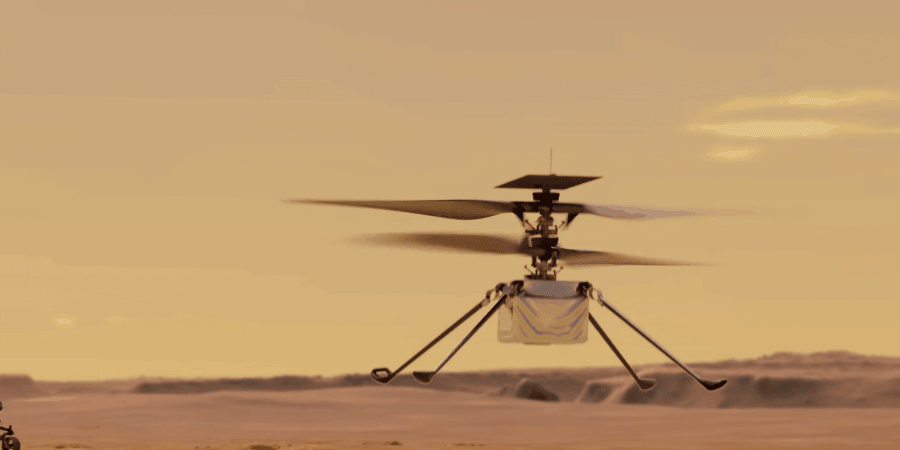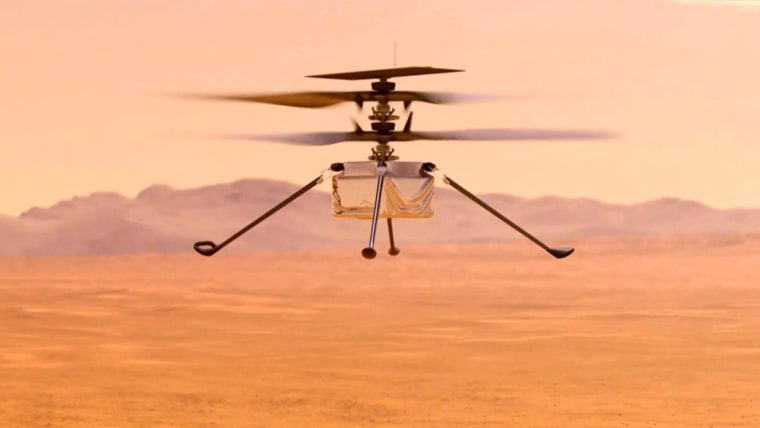On a flat, barren expanse of Martian real estate, a tiny helicopter is poised to make aviation history.
NASA’s experimental Mars helicopter, known as Ingenuity, is scheduled to take its much-anticipated first test flight on the red planet on Sunday. If successful, the joyride will be the first powered, controlled flight conducted on another planet.
“Ingenuity is an experimental engineering flight test — we want to see if we can fly at Mars,” MiMi Aung, the Ingenuity helicopter’s project manager at NASA’s Jet Propulsion Laboratory, said in a statement.
The helicopter’s first outing has drawn comparisons to Dec. 17, 1903, when Orville and Wilbur Wright completed the first powered and controlled flight on Earth. Though the brothers took turns making several flights that day, Orville was at the helm when the milestone was set, flying 120 feet in 12 seconds into frigid headwinds near Kitty Hawk, North Carolina.
Last month, NASA revealed that a postage stamp-size swatch of fabric from the Wright brothers’ first airplane, the 1903 Wright Flyer, was attached to a cable beneath the Ingenuity’s solar panel.
The small, 4-pound helicopter hitched a ride to the red planet with the Perseverance rover, which touched down in an area of Mars known as Jezero Crater on Feb. 18. Weeks after landing, the rover transported Ingenuity to its “airfield,” a flat 33-foot-by-33-foot patch of the Martian landscape.
On Sunday, the helicopter will attempt to fly for the first time in Mars’ thin atmosphere. During the test flight, which could last up to 30 seconds, the helicopter will climb to 10 feet above the Martian surface and hover for up to 30 seconds before touching down again, according to NASA.
While that short jaunt may seem simple, gravity on Mars is one-third that of Earth’s, and the red planet’s atmosphere is only 1 percent as dense as Earth’s atmosphere, which all combined make controlled flight more challenging.
“Mars is hard,” Aung said.
Engineers and flight controllers will also have to deal with a communications lag, which means NASA won’t know how the helicopter performed — or even if it survives — until early Monday morning.
If the first jaunt is deemed a success, NASA may attempt additional experimental flights, taking the helicopter out to farther distances and higher altitudes. Ingenuity is designed to operate on Mars for about 31 days, according to the agency.
NASA has said small helicopters could be groundbreaking for future expeditions to Mars and for other planetary science missions.
Lori Glaze, director of the Planetary Science Division at NASA headquarters, said in a statement that Ingenuity could “further expand our horizons and broaden the scope of what is possible with Mars exploration.”
And after nearly two months of checking its instruments and conducting tests, NASA is preparing to kick off the Perseverance rover’s two-year mission to roam the surface of Mars and search for signs of ancient microbial life.
Source: | This article originally belongs to Nbcnews.com











